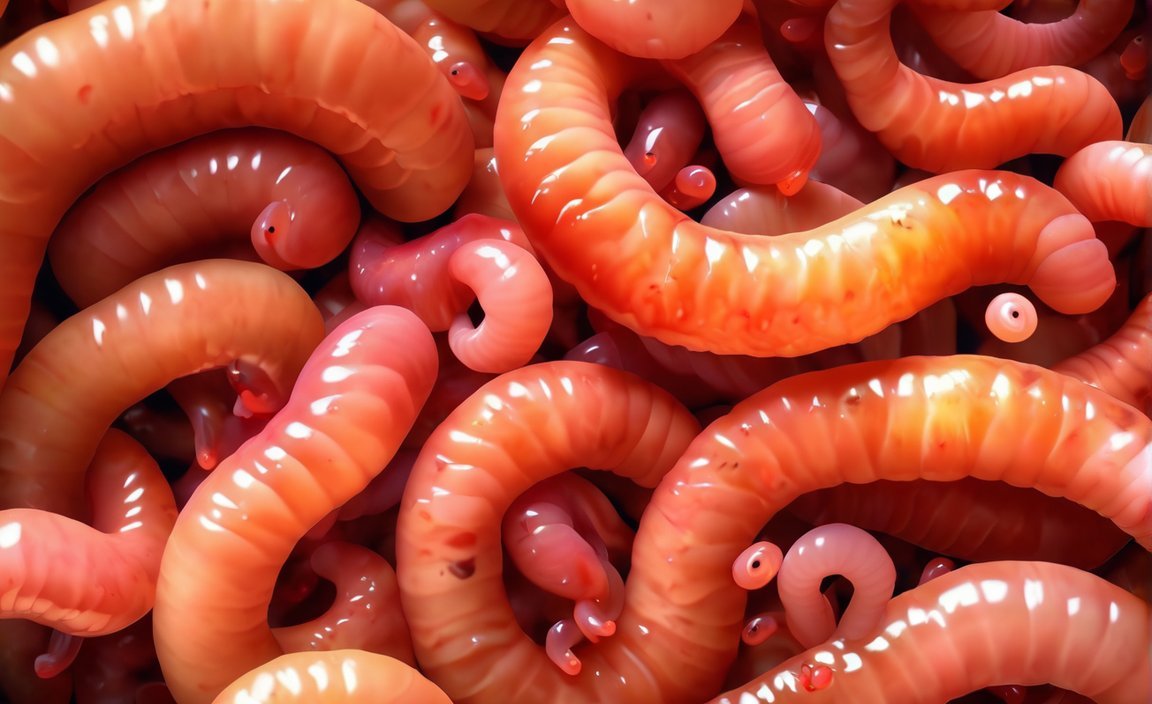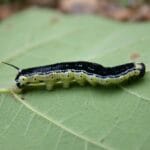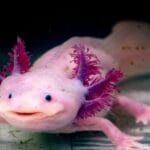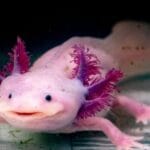If you’ve ever wondered about the hidden wonders of the natural world, prepare to be amazed as we take a closer look at the captivating creatures known as worms. In this article, aptly titled Fascinating Facts: Exploring the Top 10 Wonders of Worms, we will delve into the intriguing world of these often underappreciated creatures and uncover some mind-boggling facts that will leave you with a newfound admiration for their remarkable abilities. From their incredible regenerative powers to their crucial role in soil health, get ready to discover the top 10 fascinating facts about worms that will truly astound you.
Key Takeaways:
1. Worms can become paralyzed if exposed to light for too long.
2. Worms breathe through their skin and do not have lungs.
3. Worms have photoreceptor cells in their bodies that allow them to sense light.
4. Earthworms are hermaphroditic and have both sexual organs.
5. Earthworms can survive in water for a period of time.
6. Contrary to popular belief, worms do not regenerate and survive after being cut in half.
7. Worms are very sensitive to light, even though they do not have eyes.
8. Worms are important for soil health.
9. Earthworms live for approximately 4-8 years but are often preyed upon by various animals.
10. Worms do not have arms, legs, or eyes.
11. Earthworms belong to the phylum Annelida, not insects.
12. The Giant Gippsland earthworm is one of the largest earthworms in the world, reaching up to 9.8 feet in length.
10 Facts About Worms
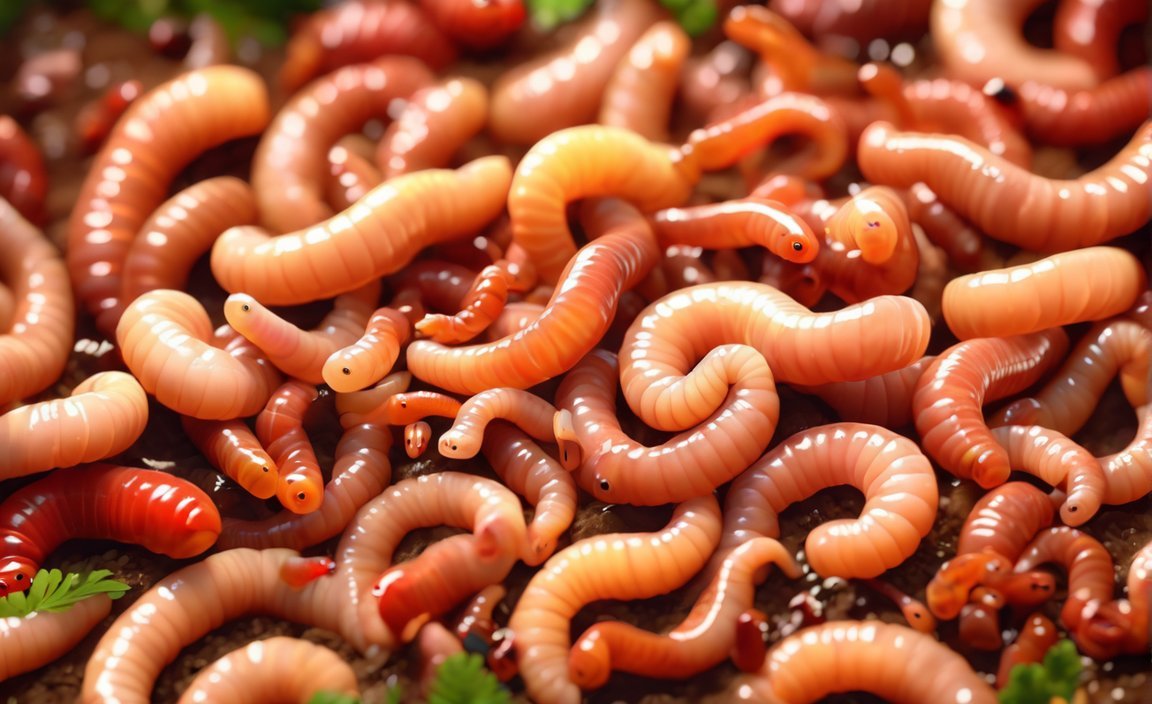
Worms: Mysterious Creatures of the Earth
Did you know that worms are not just slimy creatures in the soil? These fascinating organisms have a lot more to offer than meets the eye. From their unique ability to breathe through their skin to their crucial role in soil health, here are 10 facts about worms that will leave you amazed.
1. Worm’s Sensitivity to Light
Contrary to popular belief, worms are extremely sensitive to light, even though they don’t have eyes. In fact, exposure to light for too long can paralyze them. Worms possess specialized cells in their bodies called photoreceptor cells that allow them to sense light and navigate their surroundings.
2. Worm’s Breathing Habits
Unlike humans and most other animals, worms don’t have lungs. Instead, they breathe through their skin. This process, known as cutaneous respiration, allows oxygen molecules from the air to pass through their moist skin and enter their bloodstream. Isn’t it fascinating how they have evolved to survive without traditional respiratory organs?
3. Worm’s Incredible Regeneration Myth
It’s a common misconception that worms can regenerate and survive after being cut in half. However, this is not true for all types of worms. While some worms, such as planarians, can indeed regenerate, most earthworms cannot. So, the next time you encounter a worm, remember that it won’t magically grow back if you accidentally cut it in half.
4. Worm’s Gender Bending Abilities
Earthworms are hermaphroditic, meaning they possess both male and female sexual organs. During reproduction, two worms come together and exchange sperm, thereby fertilizing each other’s eggs. This unique trait enables them to mate with any other earthworm they encounter, maximizing their chances of reproductive success.
5. Worm’s Aquatic Survival Skills
While worms are commonly associated with soil, many species can survive in water for extended periods. These aquatic worms can be found in freshwater bodies, such as ponds and rivers, where they play a crucial role in aquatic ecosystems. Their ability to adapt to different environments highlights their resilience and versatility as a species.
6. Worms – Silent Soil Engineers
Did you know that worms play a vital role in maintaining soil health? They act as underground engineers, aerating the soil and enhancing its fertility. Their burrowing activities create tunnels that allow air and water to penetrate deep into the ground, promoting better root growth and nutrient circulation. This natural soil conditioning contributes to the overall health of plants and ecosystems.
7. Worm’s Lifespan and Predators
Earthworms typically live for around 4 to 8 years, but their lives are often cut short by various predators. Birds, frogs, toads, and even some mammals feast on these wriggling creatures. Despite their short lifespan, worms are instrumental in nutrient cycling and soil structure, making their presence crucial for the overall balance of the ecosystem.
8. Worm’s Phylum Classification
Worms belong to the phylum Annelida, which encompasses segmented worms. These organisms include not only earthworms but also marine species like polychaetes and leeches. Contrary to popular belief, worms are not insects. They share more similarities with other annelids than with insects in terms of their anatomical features and biological functions.
9. Worm Anatomy: No Arms, Legs, or Eyes
One distinctive feature of worms is their lack of arms, legs, and eyes. Instead, they rely on their muscular body movements and specialized bristles called setae to crawl through the soil or swim in the water. Their sensory systems, like touch and taste receptors, are highly developed to compensate for the absence of vision and limbs.
10. Giant Gippsland Earthworm: A Record-Breaking Wonder
The Giant Gippsland earthworm takes the prize for being one of the largest earthworms in the world. Found in the Gippsland region of Australia, these colossal creatures can grow up to a staggering 9.8 feet in length. Imagine stumbling upon one of these behemoths while exploring the Australian wilderness!
In conclusion, worms are truly remarkable creatures with a rich tapestry of fascinating characteristics. From their sensitivity to light and unique breathing techniques to their essential role in soil ecosystems, worms offer us a glimpse into the wonders of the natural world. So, the next time you come across a worm, take a moment to appreciate the incredible complexity that lies within these seemingly simple beings.
If you’re curious about the mysterious world beneath the waves, check out these 10 facts about sea creatures. Dive into the depths and discover fascinating creatures that will leave you in awe. Click here to learn more.
Are you a cat lover? Prepare to be amazed by these 10 fascinating facts about cats. From their incredible agility to their unique communication methods, cats are truly captivating creatures. Click here to find out more.
Get ready to howl with excitement as you explore these 10 fun facts about arctic wolves. From their majestic appearance to their remarkable hunting skills, arctic wolves are a truly remarkable species. Click here to join the adventure.
Some worms are capable of regenerating their bodies
Have you ever wondered about the incredible abilities of worms? These fascinating creatures have captured the curiosity of scientists and nature enthusiasts alike. One of the most intriguing aspects of worms is their remarkable regenerative capabilities. Yes, you heard it right! Some worms are capable of regenerating their bodies, and today we will uncover the wonders of this phenomenon.
With the help of groundbreaking studies and research, scientists have made fascinating discoveries about the regenerative abilities of different animal species, including worms. Let’s dive into the captivating world of worm regeneration and explore the awe-inspiring facts.
Regeneration Abilities Vary across Worm Species
Not all worms possess the same level of regenerative power. Some planarian flatworm species exhibit astonishing complete regeneration abilities, while others are unable to regenerate. However, one particular worm species stands out when it comes to its regenerative prowess – the three-banded panther worm.
Three-Banded Panther Worms: Masters of Regeneration
Three-banded panther worms possess an extraordinary ability to regenerate their entire bodies. If a portion of their body is damaged or lost, they can regrow and restore the missing parts. This remarkable feat has captivated the attention of scientists, leading to extensive research to uncover the genetic mechanisms behind this regenerative power.
A Harvard Study Unlocks the Genetics of Regeneration
In a groundbreaking study conducted by Harvard researchers, the genetics behind the regenerative abilities of three-banded panther worms were extensively explored. The study aimed to decipher the underlying mechanisms that enable these worms to regenerate with such remarkable efficiency. By understanding these processes, scientists hope to apply this knowledge to advancements in human regeneration.
The Role of Master Control Gene
During the regeneration process in worms, a master control gene plays a crucial role. This gene orchestrates the intricate mechanisms that allow worms to grow new body parts and restore lost body segments. Understanding this gene’s role in regeneration has the potential to revolutionize the field of regenerative medicine and fast-track wound healing in humans.
The regenerative abilities of worms highlight the astonishing complexity of biological systems. By studying the mechanisms behind worm regeneration, scientists gain valuable insights that could pave the way for innovative medical treatments and therapies.
Let’s summarize the key takeaways:
Key Takeaways:
– Worms possess varying regenerative abilities across different species.
– Three-banded panther worms can regenerate their entire bodies.
– A Harvard study aims to unravel the genetics behind worm regeneration.
– The presence of a master control gene is crucial for worm regeneration.
– Understanding worm regeneration could lead to advancements in human regenerative medicine.
I hope you’re just as fascinated as I am by these incredible capabilities of worms. Nature never ceases to amaze, and worms are proof of the extraordinary wonders that lie within our natural world.
Sources:
– Phys.org: “Why some worms regenerate and others do not”
– Harvard Gazette: “Harvard study unlocks a key to regeneration”
Worms exhibit fascinating behaviors and survival mechanisms

Worms are truly remarkable creatures that exhibit a wide range of intriguing behaviors and survival mechanisms. From their unique anatomy to their ability to communicate and adapt, these creatures never cease to amaze us. In this article, we will explore the top 10 wonders of worms, shedding light on their fascinating world.
1. No arms, legs, or eyes, but still thriving
Did you know that worms have no arms, legs, or eyes? It may seem surprising, but these creatures have evolved to thrive without these sensory organs. Instead of relying on vision, worms navigate their environment using their keen sense of touch and specialized bristles. Their muscular body movements enable them to burrow through soil or wiggle through water effortlessly.
2. Paralyzed by light
Exposure to light can actually paralyze worms. These creatures are highly sensitive to light, and prolonged exposure can leave them immobile and vulnerable. Worms have developed an intricate system that allows them to detect light and quickly move to darker areas for protection. This incredible adaptation ensures their survival in their natural habitats.
3. A hermaphroditic world
Most worms are hermaphrodites, meaning they possess both male and female reproductive organs. This unique characteristic allows worms to mate with any other worm they encounter. It’s a fascinating world where every individual has the potential to reproduce with another, leading to a diverse genetic pool within their populations.
4. Multiple hearts and skin breathing
Unlike humans, worms have multiple hearts, typically ranging from five to ten. These miniature pumping organs ensure efficient circulation throughout their bodies. And here’s another astonishing fact: worms don’t have lungs. Instead, they breathe through their skin, absorbing oxygen and releasing carbon dioxide. It’s a clever adaptation that enables them to survive in their oxygen-rich environments.
5. The mysterious ring
Adult worms possess a special ring called a clitella. This ring serves as a reproductive structure, producing eggs or cocoons that contain embryonic worms. It’s a fascinating sight to witness as worms secrete a slimy substance from their clitella, which eventually hardens to form protective cocoons. Inside these cocoons, new worms develop and hatch, contributing to the never-ending cycle of life.
6. The power of regeneration
Worms have an incredible ability to regenerate lost segments of their body. If a worm happens to lose a piece of its tail or even its head, it can regenerate the missing parts. This remarkable power of regeneration allows worms to recover from injuries and continue their daily activities without skipping a beat. It’s a true testament to their adaptability and resilience.
7. Beneath the soil lies their kingdom
Worms play a crucial role in maintaining soil health and fertility. As underground engineers, they aerate the soil by creating tunnels and burrows, allowing for better water and nutrient infiltration. Their feeding habits also contribute to the breakdown of organic matter, enriching the soil with valuable nutrients. Without worms, the delicate balance of ecosystems and agricultural productivity would be greatly compromised.
8. Vibrations and navigation
Worms have a unique behavior of communicating through vibrations. These vibrations serve as a means of transmitting information to other worms in their vicinity. Amazingly, worms can also navigate their surroundings by sensing vibrations in the soil. This skill helps them avoid potential dangers and locate food sources. It’s a world of communication and navigation hidden beneath our feet.
9. Evolving adaptations for survival
Worms have evolved various adaptations to avoid predators. Some species have developed toxins or unpleasant tastes, deterring predators from consuming them. Others possess sharp bristles, making it difficult for predators to handle or swallow them. These evolutionary strategies enable worms to increase their chances of survival in predator-rich environments, showcasing their remarkable ability to adapt and thrive.
10. Diversity in shapes and sizes
Worms come in a vast array of shapes and sizes. From the tiny nematodes to the larger earthworms, each species has its unique characteristics and adaptations. Some worms are almost translucent, while others display vibrant colors or patterns. Exploring the diversity of worms is like delving into a fascinating world where nature surprises us at every turn.
Key Takeaways:
- Worms have no arms, legs, or eyes, relying on touch and specialized bristles to navigate their environment.
- Exposure to light can paralyze worms, prompting them to seek darker areas for protection.
- Most worms are hermaphrodites, capable of mating with any other worm they encounter.
- Worms have multiple hearts and breathe through their skin, without the need for lungs.
- Adult worms possess a ring called a clitella, which plays a significant role in reproduction.
- Worms have the amazing ability to regenerate lost segments of their body.
- Worms are essential for maintaining soil health and fertility through their underground engineering and feeding habits.
- Worms communicate through vibrations and navigate their surroundings using this sensory information.
- Worms have evolved a range of adaptations to avoid predators, including toxins and sharp bristles.
- Worms come in various shapes and sizes, each with its unique characteristics and adaptations.
Sources:
– Worms: 10 Interesting Facts About These Amazing Creatures
– 10 Fun Facts About Worms: Squirming Secrets About Earth’s Wigglers
Worms have been used in various fields of research and medicine
Worms, those seemingly insignificant creatures that inhabit our soil and water, have actually played a significant role in various fields of research and medicine. From their unique properties to their potential contributions to scientific advancements, worms have both fascinated and benefited humanity. Let’s delve into the intriguing world of worms and discover just how they have been utilized in different areas of study.
Unveiling the Potential of Parasites in Medicine
Parasites, including worms, have been used in modern medicine for a range of purposes. These tiny creatures have proven to be valuable tools in therapies that target specific conditions. For example, leeches, bloodsucking worms, have made a comeback in medical treatments. Their saliva contains beneficial enzymes that can assist in post-surgical recovery by promoting blood circulation and preventing blood clots. The application of leeches in medicine showcases the potential of worms in delivering therapeutic benefits.
Worms as Subjects of Scientific Research
In the realm of scientific experiments, worms have been instrumental as research subjects. These fascinating creatures provide scientists with valuable insight into various fields of study. From understanding animal evolution to unraveling the mechanisms of regeneration, worms have become important models in scientific research. Their genetic makeup and unique characteristics make them ideal subjects to study complex biological processes. The study of worms sheds light on potential breakthroughs that could extend beyond their own species, benefiting human health and medicine.
Rich History of Worms in Traditional Medicine
Traditional systems of medicine, such as Unani and Siddha, have long recognized the medicinal properties of worms. Earthworms, in particular, have been utilized for their healing abilities since 1340 A.D. These remarkable creatures have been used in the treatment of ailments such as sore throats, blisters, and wounds. Their traditional use in medicine highlights the extensive knowledge and experience ancient cultures possessed in harnessing the therapeutic potential of worms.
Earthworms as Ecotoxicological Standards
Worms have also found their place as ecotoxicological standard test species. Their sensitivity to environmental changes and their role in soil health make them valuable indicators of ecological stress. Scientists utilize earthworms to assess the impact of contaminants on ecosystems. By studying the behavior and survival rates of worms in polluted environments, researchers gain valuable insights into the potential effects of pollutants on other organisms, including humans.
Attention from Prestigious Research Institutions
The significance of worms in research and medicine has gained recognition from prestigious institutions. The Scripps Research Institute, for instance, has established a Worm Institute for Research and Medicine, focusing specifically on worm diseases. This institution is dedicated to deepening our understanding of worm-related diseases and exploring potential therapeutic interventions. The attention and resources devoted to worm research by esteemed institutions underscore the importance of these creatures in advancing scientific knowledge.
Through their diverse applications and contributions to research and medicine, worms have proven themselves to be much more than mere creatures that wriggle through the earth. These fascinating organisms have captivated the attention of scientists and medical professionals alike. Their utilization in various fields underscores their value and potential for furthering our understanding of the natural world and improving human health.
Key Takeaways:
- Parasites, including worms, have been utilized in modern medicine for therapeutic purposes, showcasing their potential in this field.
- Worms have served as important and valuable subjects in scientific research, providing insights into animal evolution and biological processes.
- Traditional systems of medicine recognize the medicinal properties of worms, particularly earthworms, which have been used for centuries to treat various ailments and wounds.
- Worms play a crucial role as ecotoxicological standard test species, enabling scientists to assess the impact of pollutants on ecosystems.
- Prestigious research institutions, such as The Scripps Research Institute, have dedicated specific resources and institutes to furthering our understanding of worm-related diseases.
Sources:
– How Parasites Are Used in Modern Medicine
– Why Worms Are A Cornerstone Of Scientific Research
FAQ
Q1: Do worms have the ability to regenerate their bodies if they are injured or cut in half?
A1: No, contrary to popular belief, worms do not have the ability to regenerate and survive after being cut in half. Regenerative abilities vary across different animal species, including worms. While some planarian flatworm species and three-banded panther worms can regenerate their entire bodies, most worms cannot regenerate lost segments or body parts.
Q2: How do worms breathe if they do not have lungs?
A2: Worms breathe through their skin. They do not have lungs, but instead rely on their skin’s ability to absorb oxygen from the surrounding environment. This enables them to exchange gases and obtain the oxygen they need to survive.
Q3: Are all worms hermaphroditic?
A3: Yes, most worms, including earthworms, are hermaphroditic, which means they possess both male and female sexual organs. This unique characteristic allows them to reproduce with any other individual of the same species they encounter.
Q4: What role do worms play in soil health?
A4: Worms are incredibly important for soil health. They help to improve soil structure by burrowing through the ground, creating tunnels and channels that allow air and water to penetrate the soil. Their activities also help to break down organic matter, such as leaves and dead plant material, into nutrient-rich soil called humus. Additionally, worms excrete nutrient-rich casts, or worm poop, which further enhances soil fertility.
Q5: Why are worms of interest to scientists from various disciplines?
A5: Worms are of interest to scientists from various disciplines because they provide valuable insights into various scientific fields. Their diversity and simplicity make them excellent model organisms for studying biological processes, genetics, and development. They have also been used in scientific experiments as research subjects for various purposes, including the study of regeneration, ecotoxicology, and potential medicinal uses.
